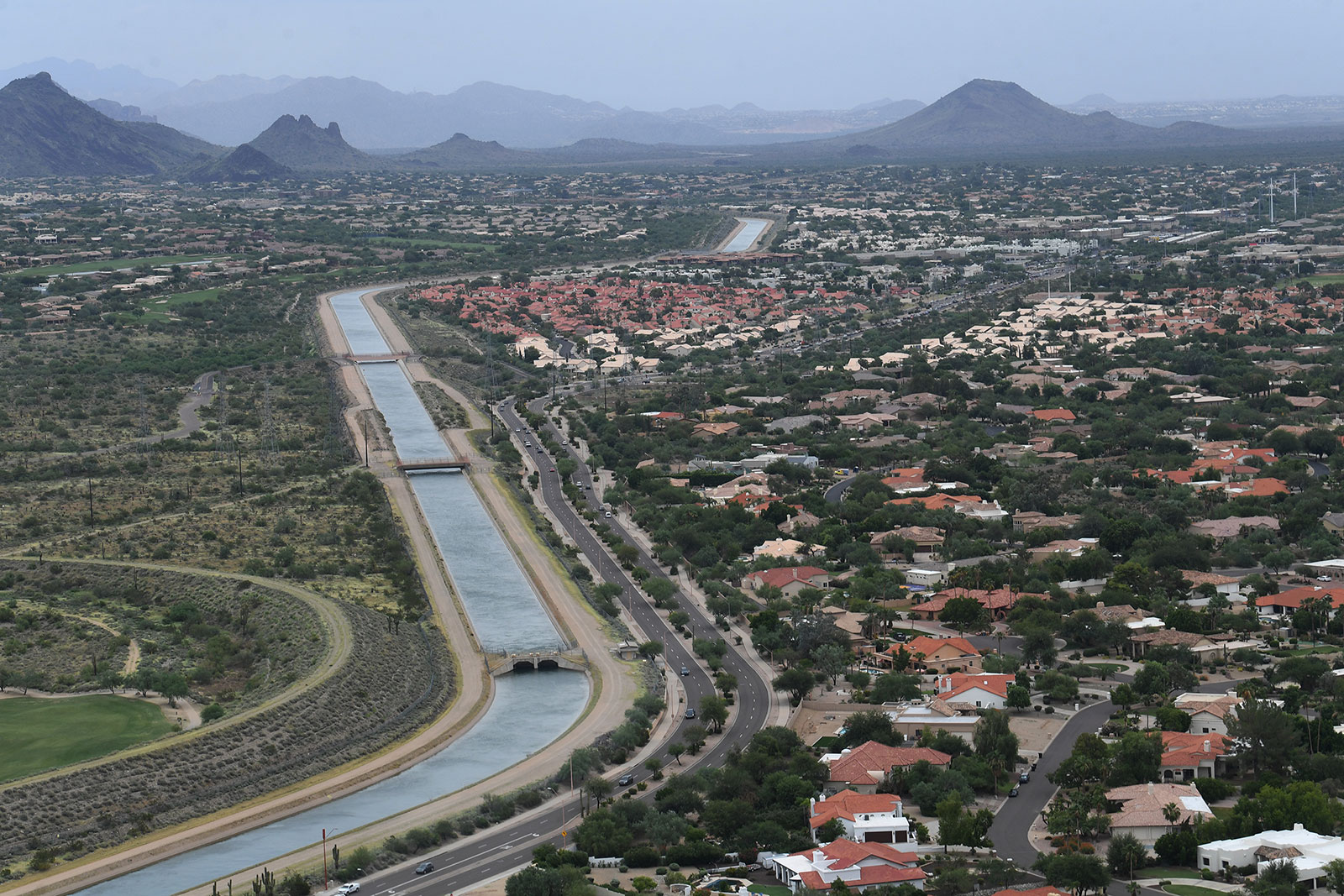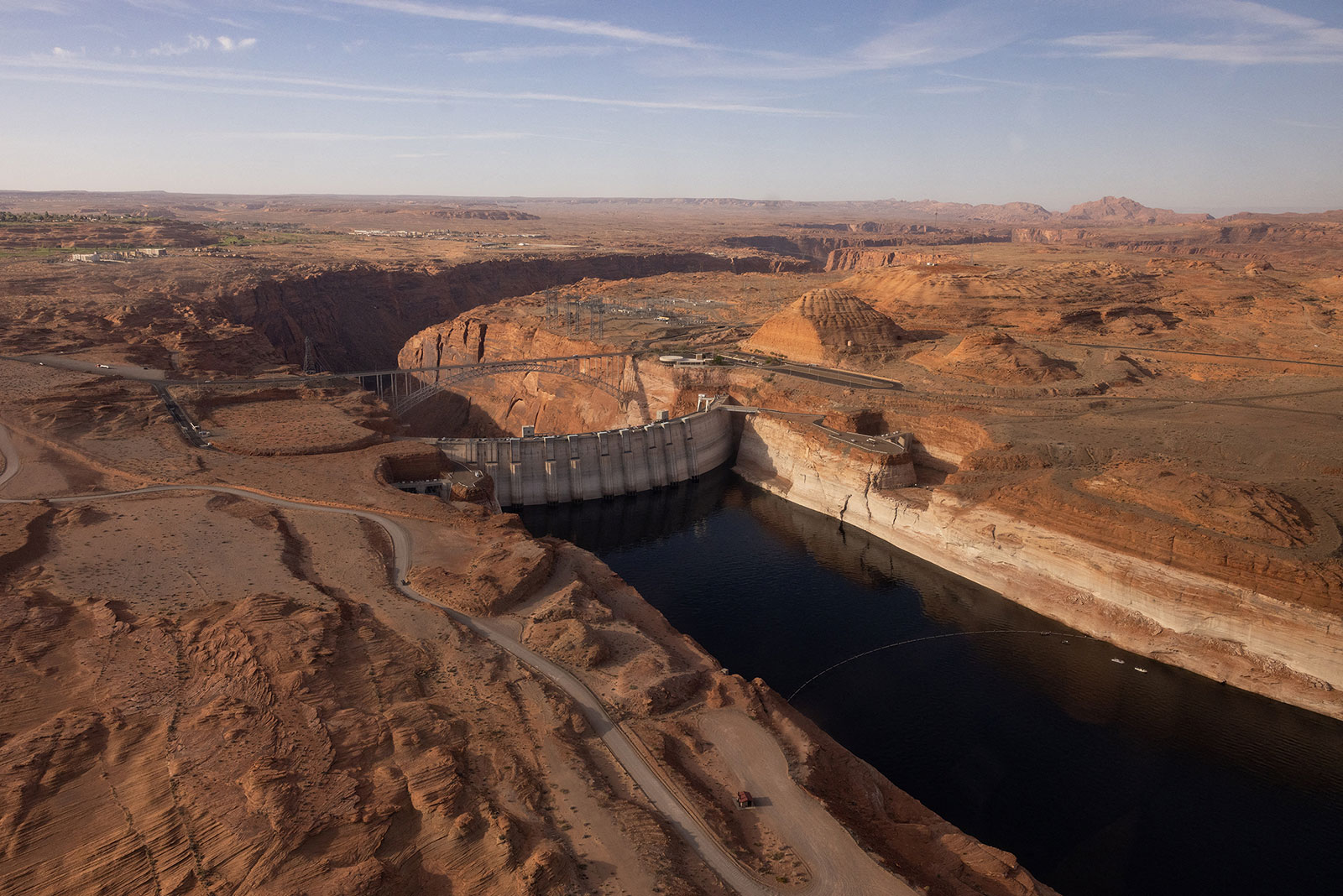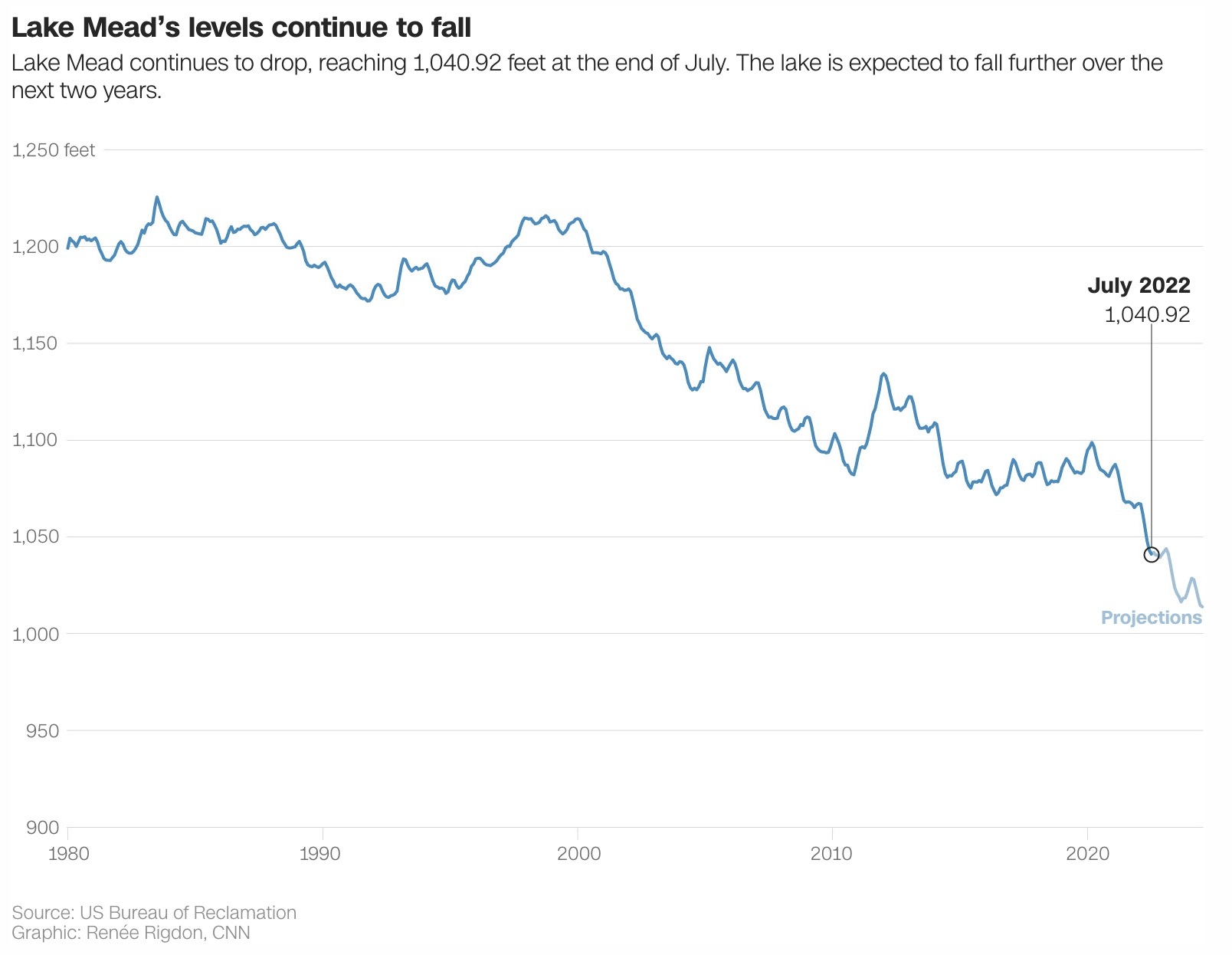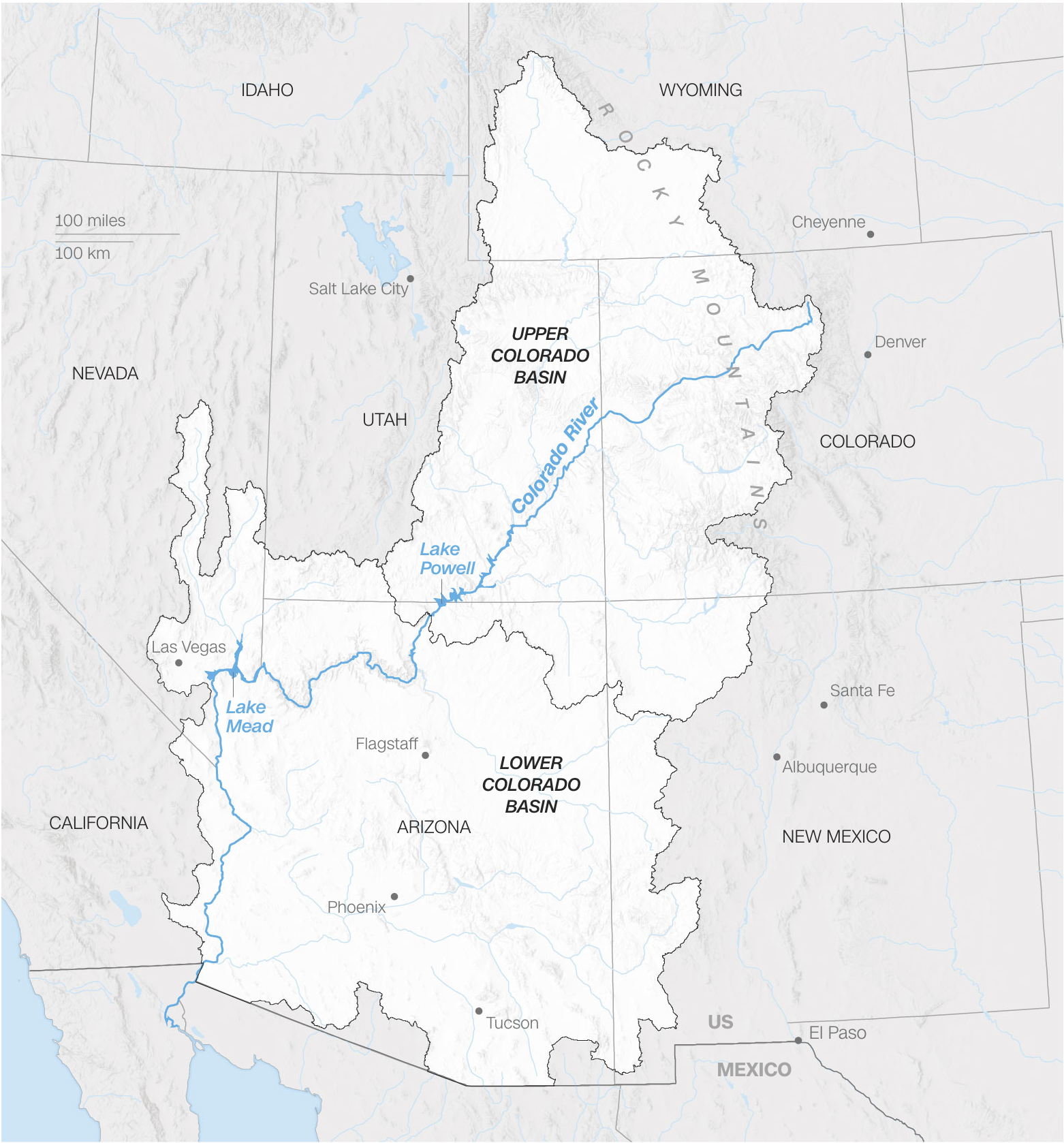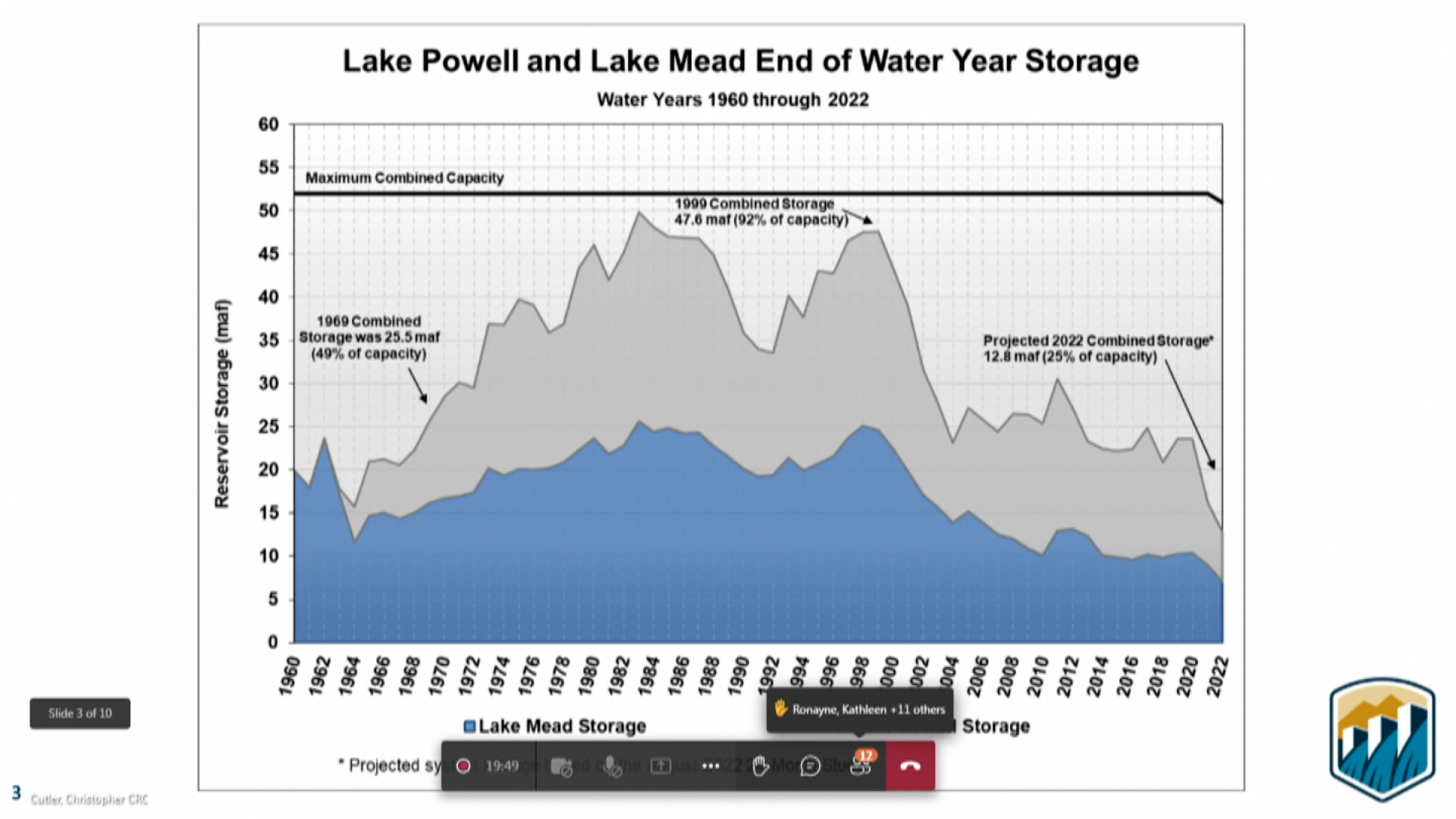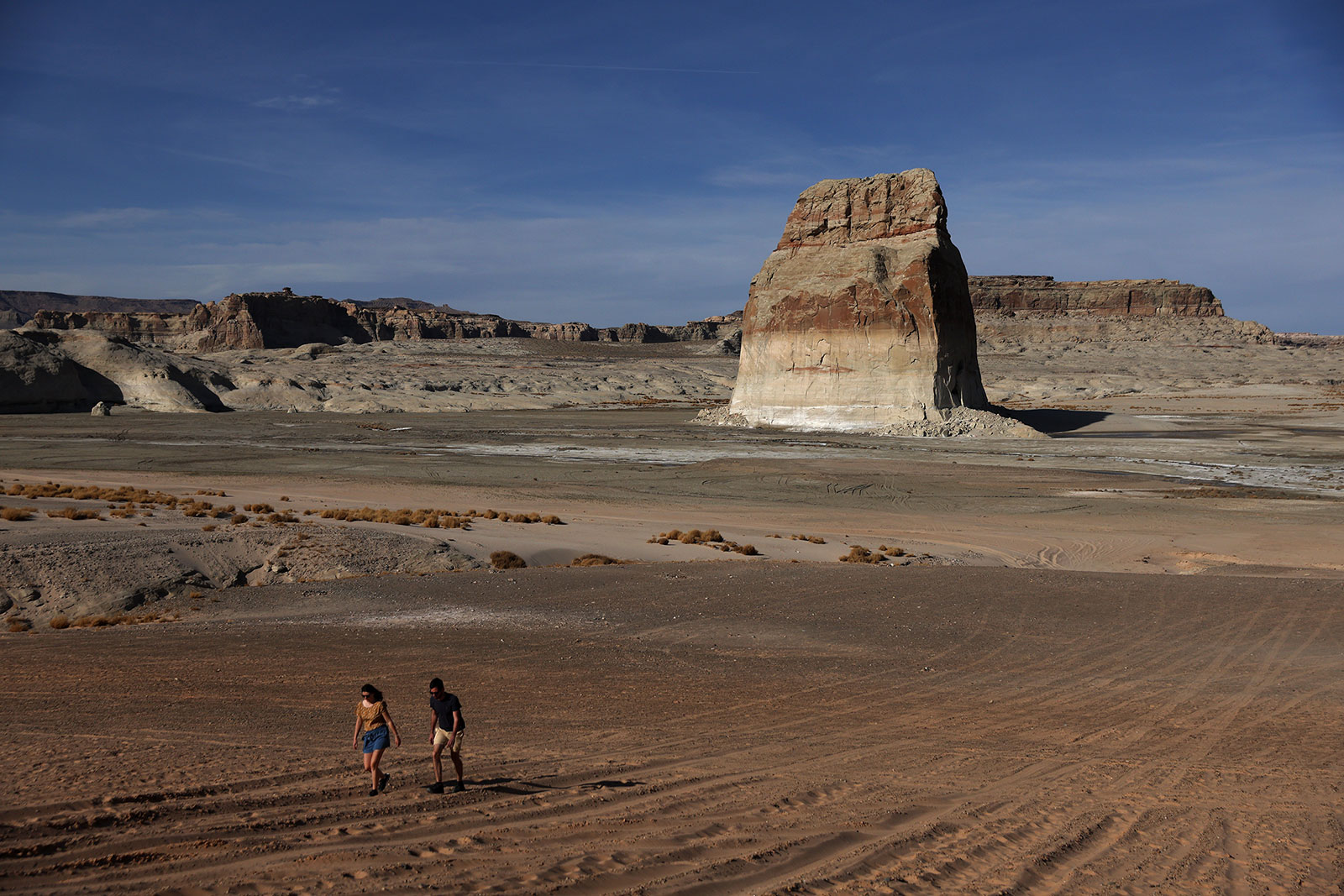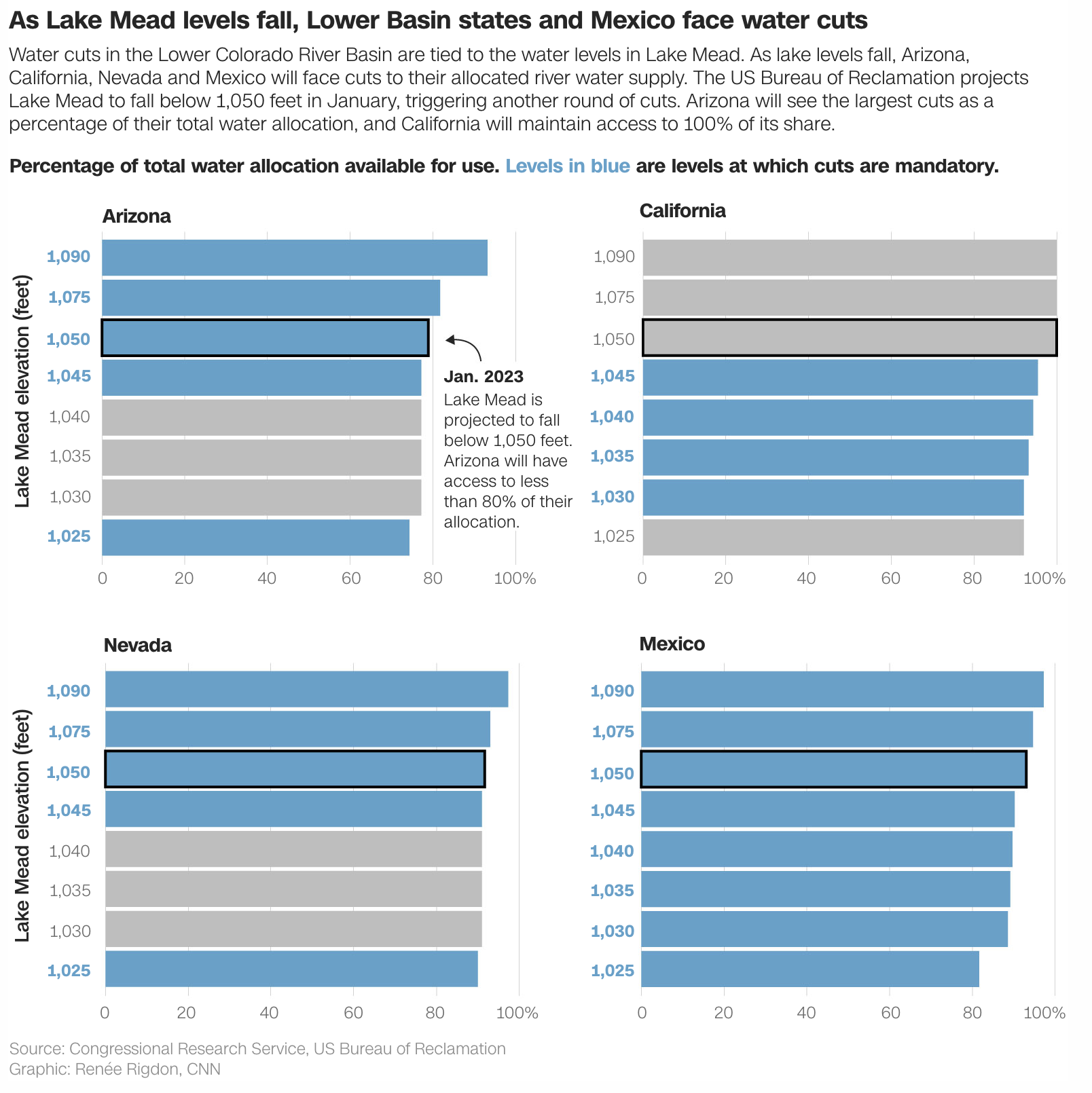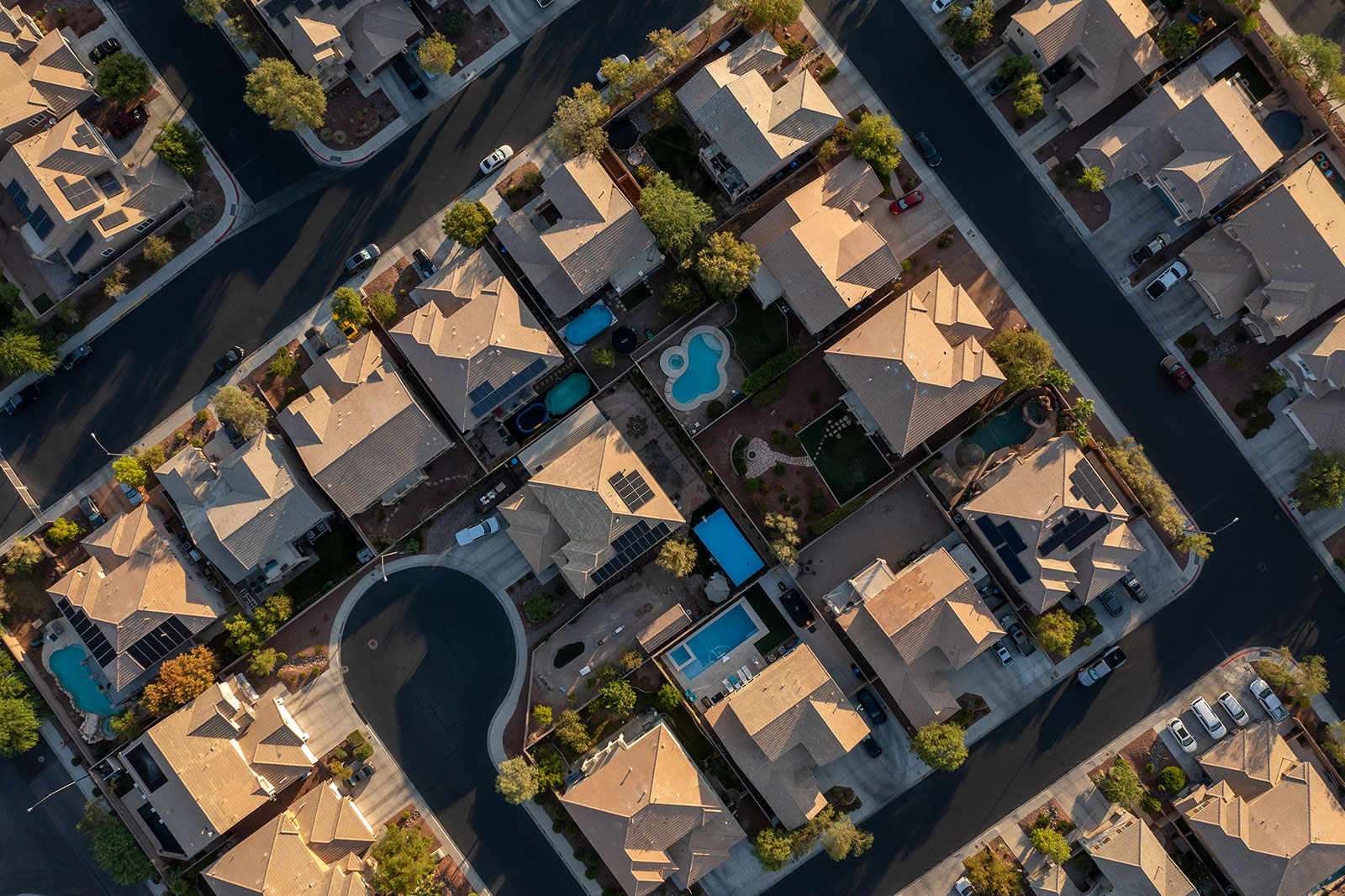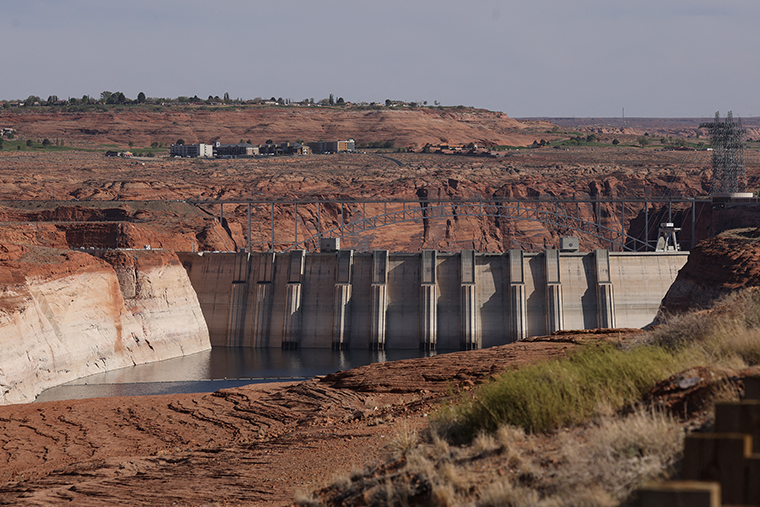
The Department of the Interior said Tuesday it is prepared to take action again next year to limit the water releases from Lake Powell to prevent it from plunging below 3,525 feet above sea level by the end of 2023. Below that level, the Glen Canyon Dam, which forms the reservoir, cannot produce hydropower.
Lake Powell’s water level is expected to fall to reach 3,521 feet above sea level by the end of December.
The Bureau of Reclamation announced unprecedented, emergency steps earlier this year to help boost water levels at Lake Powell, beginning with releasing more water from upstream on the Colorado River, then holding back water in Lake Powell itself, instead of sending it downstream to Lake Mead.
At the end of July, Lake Powell had fallen to around 3,536 feet above sea level, which is 26% of its full capacity.
“There's significant uncertainty in 2023 and two years out in 2024,” Dan Bunk, deputy chief of Boulder Canyon Operations Office, said at a Tuesday news conference. “While there's the possibility of improved conditions at Lake Powell -- with above-average inflow next year -- it would take multiple years of above average inflow for Powell to recover, and the vast majority of hydrologic projections show that Lake Powell would remain at about the same level or continue to decline over the next two years.”
“We are particularly concerned about the projections … [that] show Lake Powell declining below elevation 3,490 as early as the middle of 2023.”
Glen Canyon Dam provides power for many states including Wyoming, Utah, Colorado, New Mexico, Arizona, Nevada, and Nebraska.
Additionally, in concert with its rapidly declining levels, a recent government report also showed that the amount of water Lake Powell could store is also shrinking as sediment fills the bottom of the reservoir.
Because of that, Powell had sustained an average annual loss in storage capacity of about 33,270 acre-feet of water, or 11 billion gallons, per year between 1963 — when Glen Canyon Dam was built — and 2018. That's enough water to fill the Reflecting Pool on the National Mall about 1,600 times.





